12 Gorgeous Gypsum Ceilings (and How to Get Them)
Most people associate gypsum ceiling tiles with the ugly drop ceilings of the 60, 70s, and 80s, which usually consisted of lightweight square tiles set into a metal framework. More recently, interior designers have begun using gypsum tiles and sheets to create interesting layered ceilings. The benefits aren’t just limited to aesthetics — you can use gypsum to create a false ceiling to lower energy bills or hide utility ducts along the true ceiling. Plus, it’s great at absorbing sound.

What are Gypsum Ceilings?
Commonly used in commercial settings like offices, gypsum ceilings used to consist mostly of solid square tiles interspersed with fluorescent lighting. Today, gypsum ceilings come in all kinds of different shapes, many of which are custom-crafted to fit a particular space. Though they’re made of the same materials, gypsum ceiling tiles are often on the thinner side compared to wallboard, so they’re lighter and easier to hang.
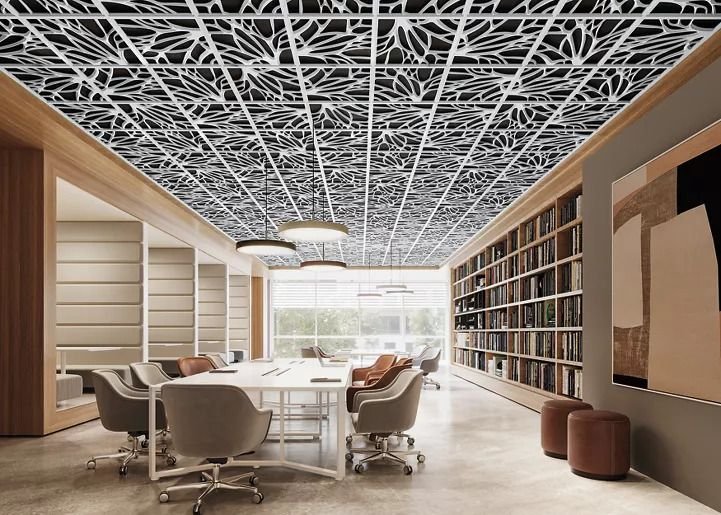
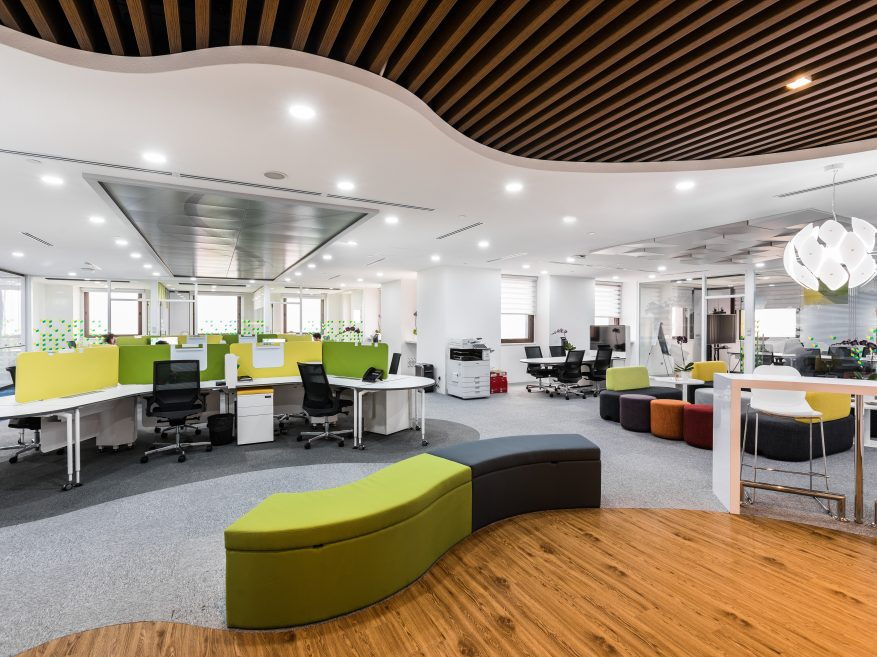

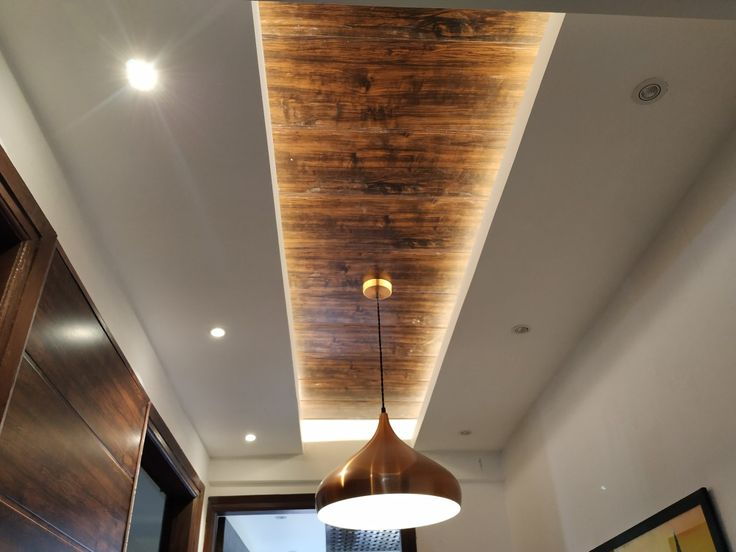
Old-fashioned gypsum ceiling tiles can still be found at hardware stores like Home Depot, but manufacturers like Gyprock and USG make tiles specifically designed for contemporary applications. Fitted to custom-made framework systems, they can be crafted into interesting curves and layered for a collage-like effect that adds architectural interest. They’re still a great way to conceal elements like built-in lighting and HVAC systems, and they can be integrated with other materials like wood for creative results.
How to Create Contemporary Gypsum Ceiling Tiles and Designs
Gypsum ceilings are usually installed below the original ceiling of the room. The process is similar to standard wallboard and drywall suspension systems, but it tends to require more precision and a higher level of finish to get good results. The joints are finished with paper joint tape embedded with joint compound before being treated with a special ceiling compound for the final coats. The surface is then coated with a spray-applied finish, and you can paint it any color you like. All the components are designed to work together as a system.

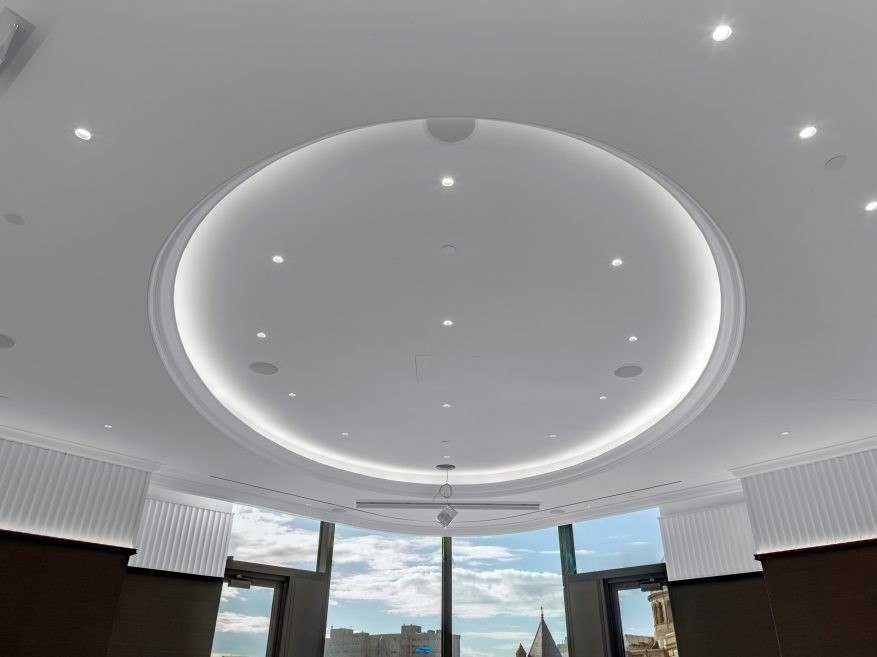
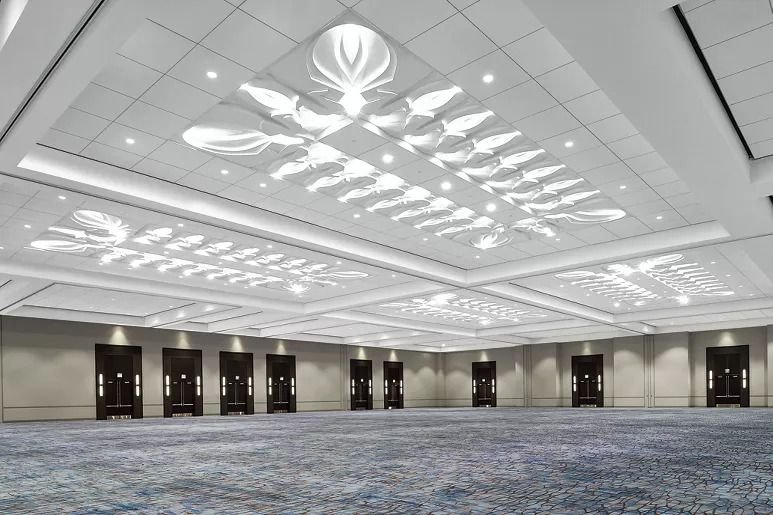
While a very experienced DIYer might be able to craft their own custom gypsum ceiling, it’s a job better left to professionals, especially when it comes to the framework. The suspension system usually involves attaching hanger wires to the true ceiling, upon which metal crossbars are hung. More complex and curving designs sometimes use a plywood or lumber framework. When working with a contractor to create your ceiling, you can come up with whatever creative designs you can imagine, and they’ll be happy to help you bring your idea to life.
What’s the Difference Between Gypsum and Drywall?
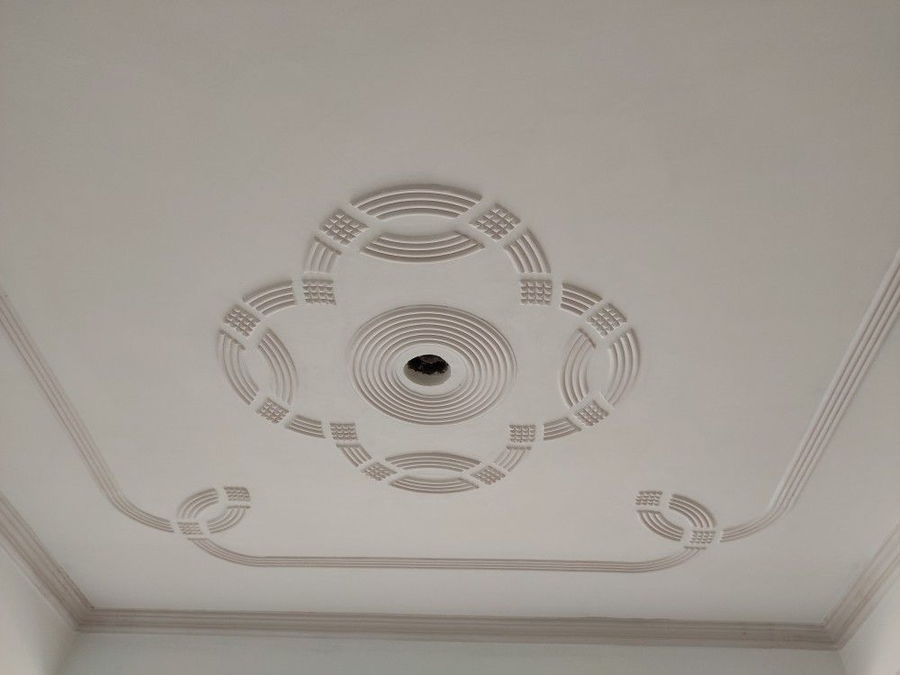
The terms gypsum, drywall, and sheetrock are often used interchangeably. Gypsum is a naturally occurring mineral called hydrous calcium sulphate and is often used to create wallboard. It’s naturally heat and flame-resistant, soundproof, and typically comes in sheets of varying thicknesses from ¼ to ⅝ inch.
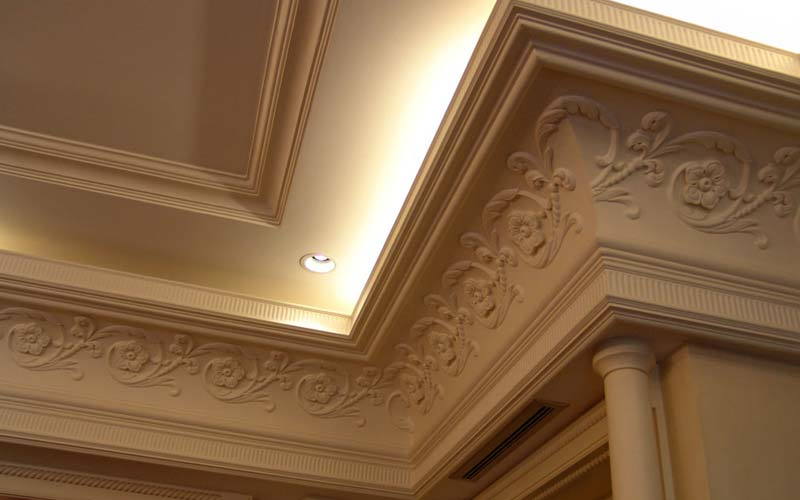
Gypsum is also the primary material used to create plaster and Plaster of Paris, which can be formed into decorative appliqués, trim work, and medallions. When applied to flat drywall ceiling surfaces, these ornate sculpted elements are also sometimes called “gypsum ceilings.” Armstrong is one brand currently using gypsum to create amazing ornate plasterwork ceilings.
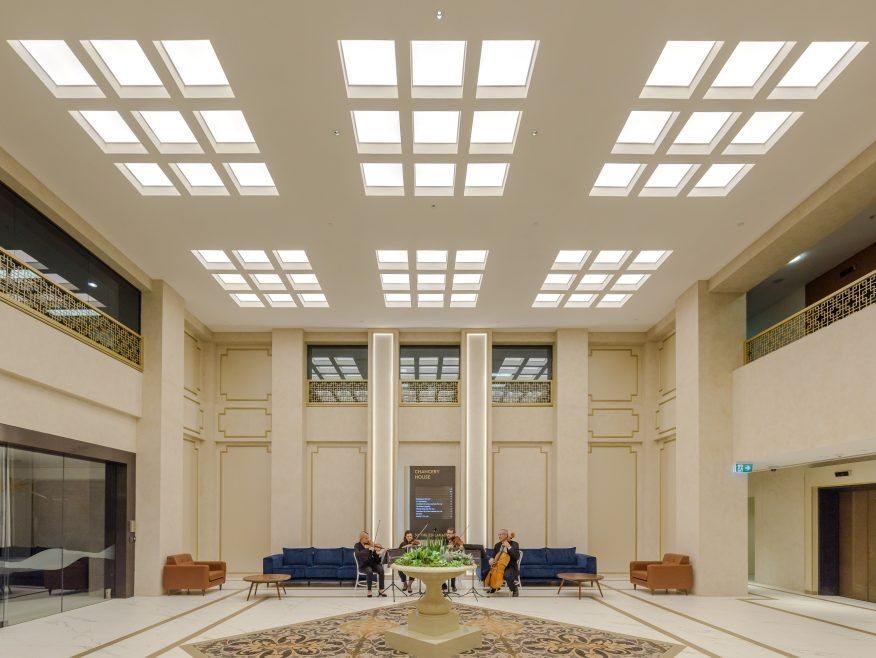
Drywall, on the other hand, is made by pressing a gypsum plaster core between two pieces of heavy paper and then kiln-drying it to create a rigid material. Introduced as an alternative to labor-intensive lathe and the plaster walls and ceilings of the 1960s, it has since become one of the most popular interior finishing materials in the world. Sheetrock is simply a specific brand of drywall, but it’s come into colloquial usage as a synonym, much like “Kleenex” for tissues and “Band-aid” for bandages.




